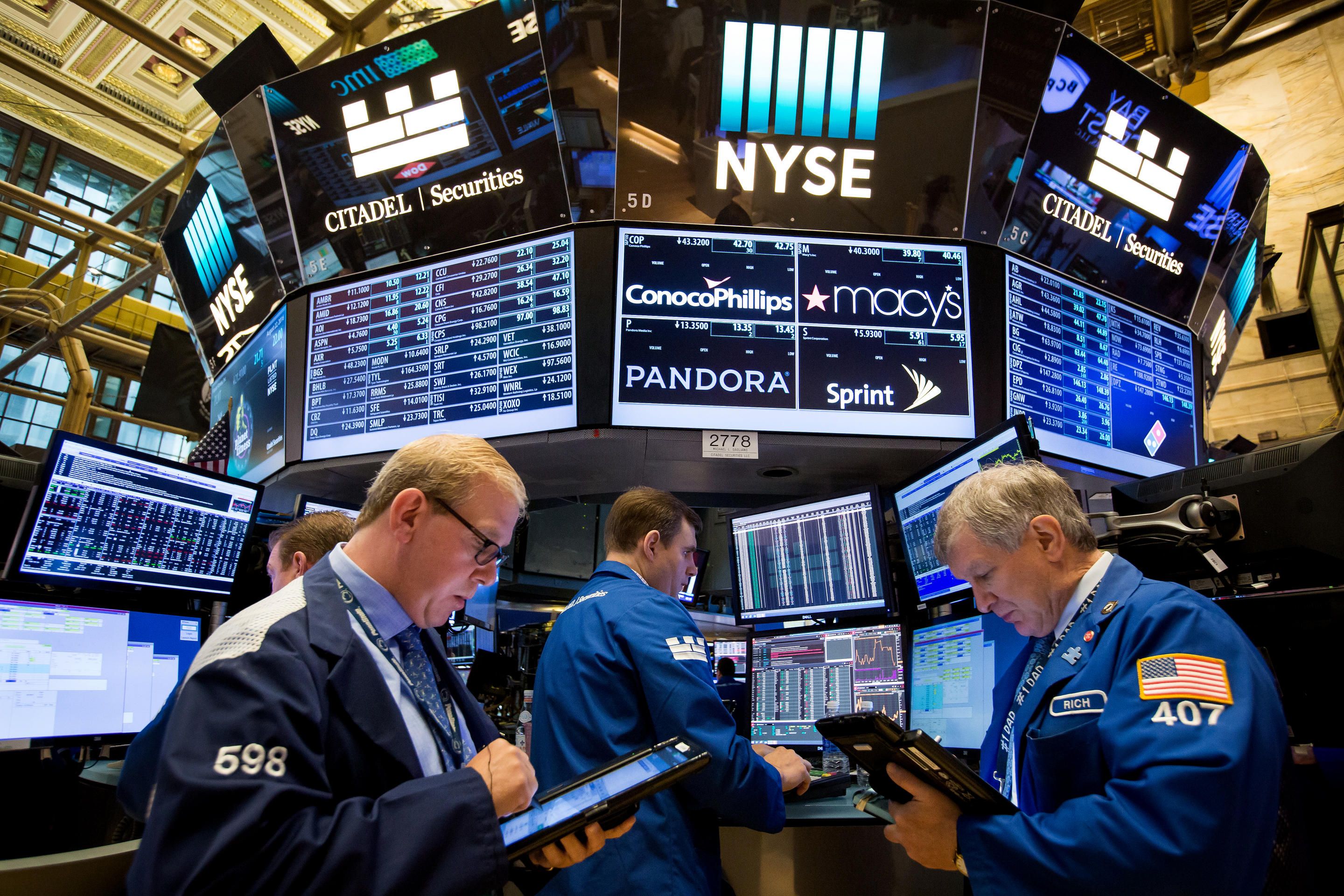Economy
US Stocks Open Higher Despite Talks on Delisting Chinese Firms

By Investors Hub
The major U.S. index futures are currently pointing to a modestly higher opening on Monday, with stocks likely to move back to the upside following the weakness seen last Friday.
Early buying interest may be generated in reaction to news that a Treasury Department spokeswoman denied reports the Trump administration is considering delisting Chinese companies from U.S. stock exchanges
?The administration is not contemplating blocking Chinese companies from listing shares on U.S. stock exchanges at this time. We welcome investment in the United States,? Treasury spokeswoman Monica Crowley said in a statement.
Crowley?s statement comes on the heels of reports suggesting the administration is contemplating ways to curb U.S. investments in China.
White House trade advisor Peter Navarro attacked the media reports in an interview with CNBC on Monday, claiming ?over half? of a Bloomberg report about potential restrictions was ?highly inaccurate or simply flat-out false.?
?This story was just so full of inaccuracies and in terms of the truth of the matter, what the Treasury said I think was accurate,? Navarro said.
Better than expected manufacturing data out of China may also temper some of the recent concerns about the impact of the U.S.-China trade war.
After seeing considerable volatility in the morning, stocks moved mostly lower over the course of the trading session on Friday. The major averages all slid firmly into negative territory, with the tech-heavy Nasdaq showing a particularly steep drop.
The major averages climbed off their worst levels going into the close but remained in the red. The Dow dipped 70.87 points or 0.3 percent to 26,820.25, the Nasdaq tumbled 91.03 points or 1.1 percent to 7,939.63 and the S&P 500 fell 15.83 points or 0.5 percent to 2,961.79.
For the week, the Nasdaq plunged by 2.2 percent, the S&P 500 slumped by 1 percent and the Dow dropped by 0.4 percent.
Stocks moved to the downside after a report from Bloomberg News said Trump administration officials are discussing ways to limit U.S. investors’ portfolio flows into China.
Citing people familiar with the internal deliberations, Bloomberg noted the move would have repercussions for billions of dollars in investment pegged to major indexes.
A source family with the matter confirmed to CNBC that the White House is weighing some curbs on U.S. investments in China but noted the discussions are in the preliminary stages and nothing has been decided.
The reports reflect the ever-changing landscape of U.S.-China relations that has kept traders reluctant to make significant bets.
Earlier in the day, traders expressed some optimism about U.S.-China trade talks after a report from CNBC said negotiations are set to resume October 10th in Washington.
A person close to the talks said Chinese Vice Premier Liu He would be representing the delegation from Beijing at the meetings.
The U.S. and China held deputy-level trade talks last week, although Treasury Secretary Steven Mnuchin called off a trip by Chinese officials to U.S. farms.
On the U.S. economic front, the Commerce Department released a report unexpectedly showing a modest increase in U.S. durable goods orders in the month of August.
The Commerce Department said durable goods orders rose by 0.2 percent in August after jumping by 2.0 percent in July. The continued increase surprised economists, who had expected orders to pull back by 1.0 percent.
Excluding a drop in orders for transportation equipment, durable goods orders increased by 0.5 percent in August after falling by 0.5 percent in July. Economists had expected ex-transportation orders to rise by 0.2 percent.
However, the report also said orders for non-defense capital goods excluding aircraft, a key indicator of business spending, edged down by 0.2 percent in August after coming in unchanged in July.
A separate Commerce Department report showed U.S. personal income rose in line with economist estimates in the month of August, although personal spending inched up by less than expected.
The Commerce Department said personal income climbed by 0.4 percent in August after ticking up by 0.1 percent in July. The increase in income matched economist estimates.
Meanwhile, the report said personal spending crept up by 0.1 percent in August after climbing by 0.5 percent in July. Spending had been expected to rise by 0.3 percent.
Semiconductor stocks showed a significant move to the downside over the course of the trading session, dragging the Philadelphia Semiconductor Index down by 2.4 percent.
Chipmaker Micron Technology (MU) led the sector lower after reporting better than expected fiscal fourth quarter results but providing disappointing guidance.
Considerable weakness was also visible among gold stocks, as reflected by the 2.1 percent slump by the NYSE Arca Gold Bugs Index.
The weakness in the gold sector came as the price of the precious metal climbed off its worst levels but still showed a notable decrease.
Software, telecom, and oil service stocks also came under pressure as the day progressed, moving lower along with most of the other major sectors.
Economy
NBA Demands Suspension of Controversial Tax Laws

By Modupe Gbadeyanka
The federal government has been asked by the Nigerian Bar Association (NBA) to suspend the implementation of the controversial tax laws.
In a reaction to the tax reform acts, the president of the group, Mr Afam Osigwe (SAN), the suspension of the laws would allow for a proper investigation into allegations of alterations in the gazetted and harmonised copies.
A member of the House of Representatives, Mr Abdussamad Dasuki, alleged that some parts of the laws passed by the parliament were different from the gazetted copy.
To address the issues raised, the NBA said it is “imperative that a comprehensive, open, and transparent investigation be conducted to clarify the circumstances surrounding the enactment of the laws and to restore public confidence in the legislative process.”
“Until these issues are fully examined and resolved, all plans for the implementation of the Tax Reform Acts should be immediately suspended,” the association declared.
It noted that the controversies “raise grave concerns about the integrity, transparency, and credibility of Nigeria’s legislative process.”
“These developments strike at the very heart of constitutional governance and call into question the procedural sanctity that must attend lawmaking in a democratic society,” it noted.
“Legal and policy uncertainty of this magnitude has far-reaching consequences. It unsettles the business environment, erodes investor confidence, and creates unpredictability for individuals, businesses, and institutions required to comply with the law. Such uncertainty is inimical to economic stability and should have no place in a system governed by the rule of law.
“Nigeria’s constitutional democracy demands that laws, especially those with profound economic and social implications, emerge from processes that are transparent, accountable, and beyond reproach. Anything short of this undermines public trust and weakens the foundation upon which lawful governance rests.
“We therefore call on all relevant authorities to act swiftly and responsibly in addressing this controversy, in the overriding interest of constitutional order, economic stability, and the preservation of the rule of law,” the organisation stated.
Economy
MRS Oil, Two Others Raise NASD Bourse Higher by 0.52%

By Adedapo Adesanya
Demand for hot stocks, including MRS Oil Plc, buoyed the NASD Over-the-Counter (OTC) Securities Exchange by 0.52 per cent on Tuesday, December 23.
The energy company was one of the three price gainers for the session as it chalked up N19.69 to sell at N216.59 per share versus the previous day’s value of N196.90 per share.
Further, FrieslandCampina Wamco Nigeria Plc gained N2.95 to close at N56.75 per unit versus N53.80 per unit and Golden Capital Plc appreciated by 84 Kobo to N9.29 per share from Monday’s N8.45 per share.
Consequently, the market capitalisation went up by N10.95 billion to N2.125 trillion from N2.125 trillion and the NASD Unlisted Security Index (NSI) rose by 18.31 points to 3,570.37 points from 3,552.06 points.
Yesterday, the NASD bourse recorded a price loser, the Central Securities Clearing System Plc (CSCS), which gave up 17 Kobo to close at N33.70 per unit against the previous trading value of N33.87 per unit.
The volume of securities traded at the session went down by 97.6 per cent to 297,902 units from the previous day’s 12.6 million units, the value of securities decreased by 98.5 per cent to N10.5 million from N713.6 million, and the number of deals remained flat at 32 deals.
By value, Infrastructure Credit Guarantee Company (InfraCredit) Plc ended as the most actively traded stock on a year-to-date basis with 5.8 billion units exchanged for N16.4 billion. This was followed by Okitipupa Plc, which traded 178.9 million units valued at N9.5 billion, and MRS Oil Plc with 36.1 million units worth N4.9 billion.
In terms of volume, also on a year-to-date basis, InfraCredit Plc led the chart with a turnover of 5.8 billion units traded for N16.4 billion. Industrial and General Insurance (IGI) Plc ranked second with 1.2 billion units sold for N420.7 million, while Impresit Bakolori Plc followed with the sale of 536.9 million units valued at N524.9 million.
Economy
NGX All-Share Index Soars to 153,354.13 points

By Dipo Olowookere
It was another bullish trading session for the Nigerian Exchange (NGX) Limited as it closed higher by 0.59 per cent on Tuesday.
The market further rallied due to continued interest in large and mid-cap stocks on the exchange by investors rebalancing their portfolios for the year-end.
Yesterday, Aluminium Extrusion sustained its upward trajectory after it further appreciated by 9.96 per cent to N14.90, as Austin Laz gained 9.81 per cent to close at N2.91, Custodian Investment improved by 9.69 per cent to N38.50, and First Holdco soared by 9.35 per cent to N50.30.
Conversely, Royal Exchange declined by 7.22 per cent to N1.80, Champion Breweries shrank by 6.57 per cent to N15.65, NASCON lost 5.36 per cent to trade at N105.05, Sovereign Trust Insurance depreciated by 5.28 per cent to N3.77, and Japaul went down by 4.51 per cent to N2.33.
At the close of business, 29 shares ended on the gainers’ table and 27 shares finished on the losers’ log, representing a positive market breadth index and bullish investor sentiment.
This raised the All-Share Index (ASI) by 895.06 points to 153,354.13 points from 152,459.07 points and lifted the market capitalisation by N579 billion to N97.772 trillion from the previous day’s N97.193 trillion.
VFD Group finished the day as the busiest stock after it recorded a turnover of 192.0 million units worth N2.1 billion, GTCO exchanged 63.5 million units valued at N5.6 billion, Access Holdings traded 49.8 million units for N1.0 billion, First Holdco sold 45.8 million units valued at N2.3 billion, and Secure Electronic Technology transacted 38.3 million units worth N28.4 million.
In all, market participants bought and sold 677.4 million units valued at N20.8 billion in 27,589 deals compared with the 451.5 million units worth N13.0 billion traded in 33,327 deals on Monday, showing an improvement in the trading volume and value by 50.03 per cent and 60.00 per cent apiece, and a shortfall in the number of deals by 17.22 per cent.
-

 Feature/OPED6 years ago
Feature/OPED6 years agoDavos was Different this year
-
Travel/Tourism9 years ago
Lagos Seals Western Lodge Hotel In Ikorodu
-

 Showbiz3 years ago
Showbiz3 years agoEstranged Lover Releases Videos of Empress Njamah Bathing
-

 Banking8 years ago
Banking8 years agoSort Codes of GTBank Branches in Nigeria
-

 Economy3 years ago
Economy3 years agoSubsidy Removal: CNG at N130 Per Litre Cheaper Than Petrol—IPMAN
-

 Banking3 years ago
Banking3 years agoFirst Bank Announces Planned Downtime
-

 Banking3 years ago
Banking3 years agoSort Codes of UBA Branches in Nigeria
-

 Sports3 years ago
Sports3 years agoHighest Paid Nigerian Footballer – How Much Do Nigerian Footballers Earn













